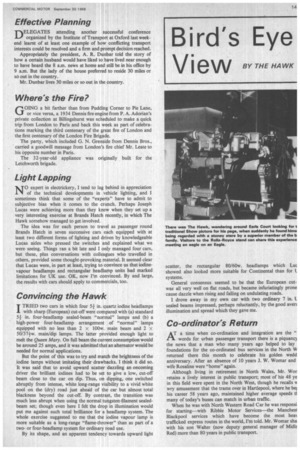Convincing the Hawk
Page 151

If you've noticed an error in this article please click here to report it so we can fix it.
T TRIED two cars in which four 51 in. quartz iodine headlamps 1. with sharp (European) cut-off were compared with (a) standard 51 in. four-headlamp sealed-beam "normal" lamps and (b) a high-power four-headlamp arrangement of "normal" lamps equipped with no less than 2 x 100w. main beam and 2 x 50/374w. main/dip lamps. The latter provided enough light to melt the Queen Mary. On full beam the current consumption would be around 25 amps, and it was admitted that an alternator would be needed for normal applications.
But the point of this was to try and match the brightness of the iodine lamps without imitating their drawbacks. I think it did so. It was said that to avoid upward scatter dazzling an oncoming driver the brilliant iodines had to be set to give a low, cut-off beam close to the car on dip. Thus, on dipping, one switched abruptly from intense, white long-range visibility to a vivid white pool on the (dry) road just ahead of the car but almost total blackness beyond the cut-off. By contrast, the transition was much less abrupt when using the normal tungsten-filament sealedbeam set; though even here I felt the drop in illumination would put me against such total brilliance for a headlamp system. The whole exercise suggested to me that the iodine vapour lamp is more suitable as a long-range "flame-thrower" than as part of a twoor four-headlamp system for ordinary road use.
By its shape, and an apparent tendency towards upward light
















































































































































































































